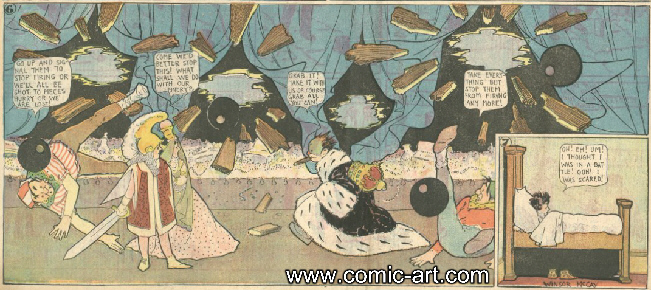
Museum of Comic Art | Search this Site | Web Links
About Comic-art.com | Art For Sale | Comics For Sale
Comics On CDRom | Movie Posters | Pulps For Sale
We Buy Collections | Contact Us |Home Page

| Winsor McCay | ||
|
||
|
||
|
Hearst used McCay's contract to forbid him to perform in vaudeville, and Gertie was made into a feature film with a live-action prologue and epilogue and shown around the world. Hearst eventually forbid McCay from even doing daily strips, restricting him to editorial cartoons. McCay continued producing animated films, however, producing "The Sinking Of The Lusitania" and six other films through 1921. Shortly thereafter "In the Land of Wonderful Dreams" was discontinued so that McCay could work on other projects that he wanted to do and most of the period after 1915 is represented artistically by his political cartoons. Little Nemo was brought back for a short period in the 1920's but the success of the Victorian strip that it repesented was over & it would not be for many years until the strip was rediscovered has since become an icon of American Culture. McCay passed away on July 26, 1934, but his legacy continues to thrill fans of his work including Garry Trudeau, the creator of the "Doonesbury" comic strip. |
||
 |
||
|
|
||
|
|
||

 |
 |